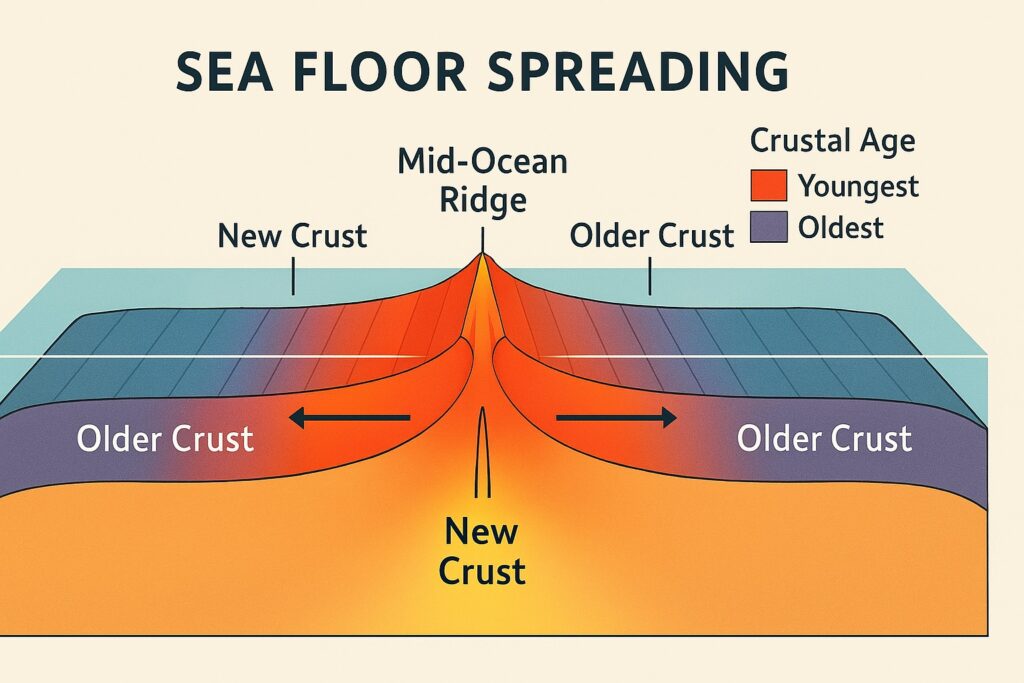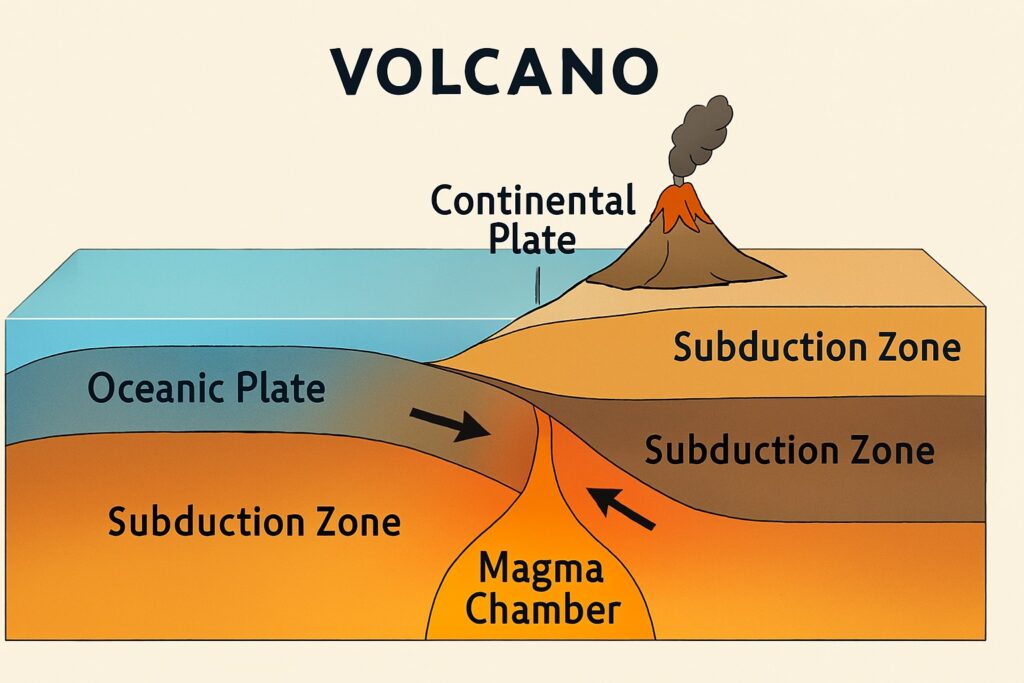Sea floor spreading is a geological process that explains the formation of new oceanic crust at mid-ocean ridges and its movement away from the ridge over time. This concept plays a vital role in the theory of plate tectonics and has transformed our understanding of how continents and oceans evolve over geological time. Seafloor spreading is a geological process that occurs at the bottom of the ocean, where new oceanic crust is formed through the upwelling of magma from the Earth’s mantle.
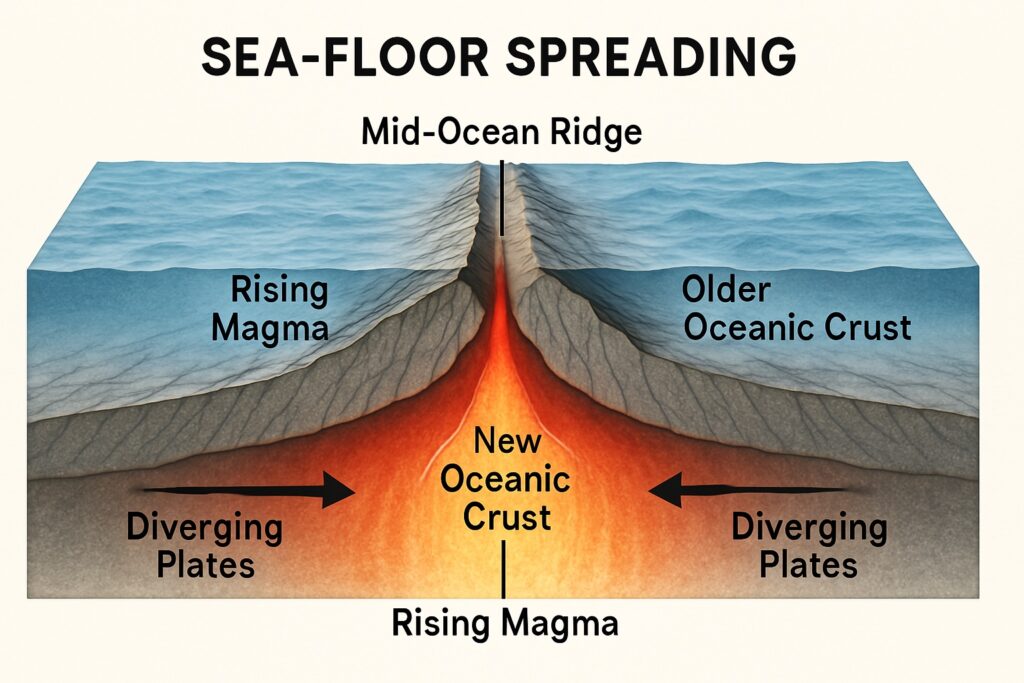
Table of Contents
What is seafloor spreading?
Seafloor spreading is a geological process that occurs at the boundaries of tectonic plates, where new oceanic crust is created through the upwelling of magma from the Earth’s mantle. As the magma cools and solidifies, it forms a new layer of crust, which pushes the existing oceanic crust away from the mid-ocean ridge, where the process occurs.
| Scientist | School | Year |
|---|---|---|
| Harry Hess | American | 1960 |
As the new crust is formed, it spreads out in both directions from the mid-ocean ridge, causing the seafloor to widen. This process is driven by the movement of the tectonic plates themselves, which are in constant motion due to the convective currents in the Earth’s mantle. Over time, the seafloor spreading process can lead to the formation of new oceans, as the continents are pushed apart and the new crust fills in the gap.
The process of sea floor spreading was first proposed by the American geophysicist Harry Hess in the 1960s. According to his theory, the oceanic crust is created at mid-ocean ridges, where magma rises from the mantle to fill the gap created by the separation of two tectonic plates. As the magma cools and solidifies, it forms new oceanic crust, which pushes the existing crust away from the ridge, like a conveyor belt.
Stages of Seafloor Spreading
The sea floor spreading process can be divided into three main stages: magma generation, magma transport, and crustal accretion.
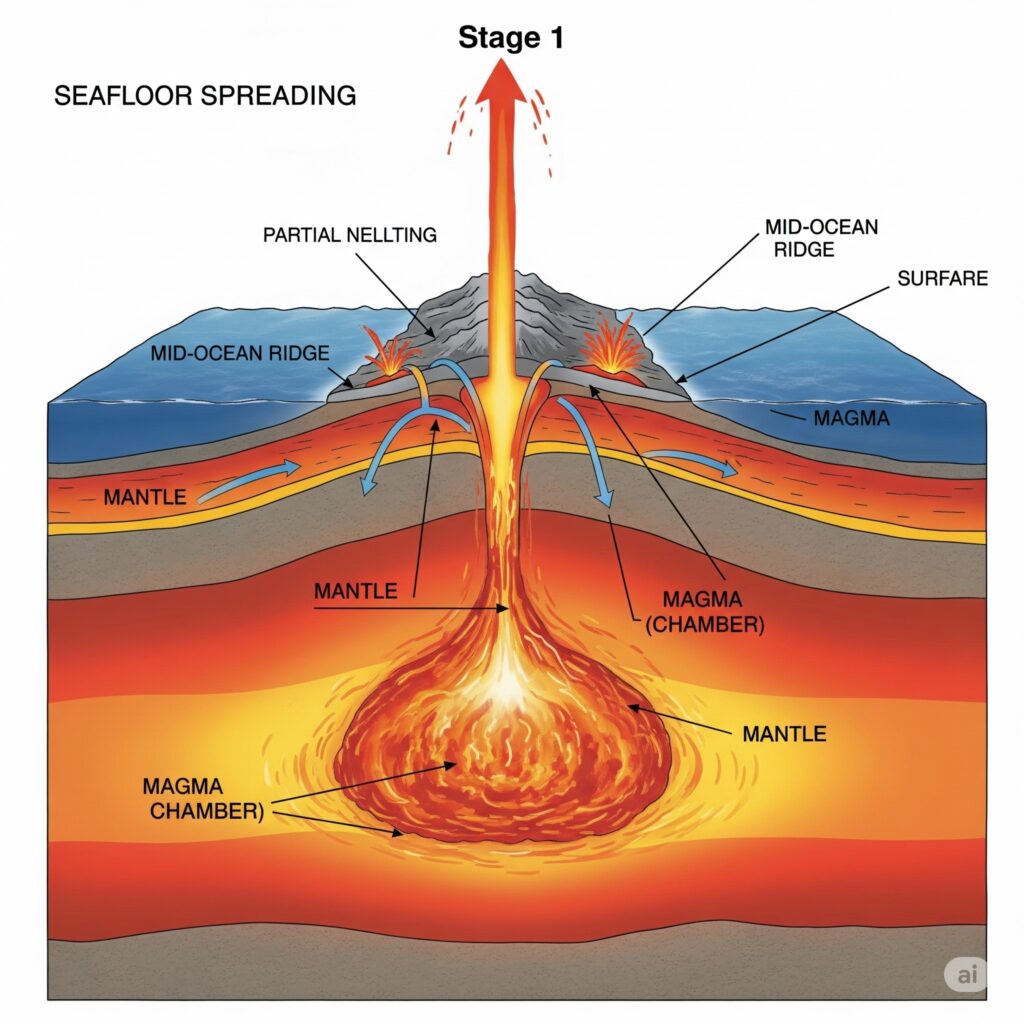
Stage 1: Rise of Magma
In the first stage, magma is generated through partial melting of the Earth’s mantle beneath mid-ocean ridges. The magma rises to the surface and forms a magma chamber, which feeds the volcanic activity at the ridge.
Stage 2: Expansion of Fracture
In the second stage, the magma is transported to the surface through a series of fractures and faults in the oceanic crust. As the magma rises, it heats the surrounding rock, causing it to expand and fracture. This creates a pathway for the magma to reach the surface, where it solidifies and forms new crust.
Stage 3: Movement of Oceanic Plates
In the third stage, the new crust is added to the existing oceanic plate, causing it to move away from the mid-ocean ridge. This movement is known as seafloor spreading and is responsible for the widening of the ocean basins. As the oceanic plate moves away from the mid-ocean ridge, it cools and becomes denser, eventually sinking back into the mantle at subduction zones.
Sea Floor Spreading Theory
Sea floor spreading theory is a geologic theory that explains how the ocean floor is created and how it moves. The theory was proposed in the 1960s by geophysicist Harry Hess and built upon the earlier work of other scientists, including Alfred Wegener’s theory of continental drift.
According to sea floor spreading theory, new oceanic crust is formed at mid-ocean ridges, which are long underwater mountain ranges that run through the middle of the world’s oceans. At these ridges, magma from the Earth’s mantle rises up and solidifies to form new crust. As the magma cools and solidifies, it pushes the existing oceanic crust away from the ridge, creating a new ocean floor.
As the new crust is formed, it spreads out in both directions away from the mid-ocean ridge, like a conveyor belt. This movement is driven by the upwelling of magma at the ridge and the force of gravity, which causes the older, denser crust to sink back into the Earth’s mantle at subduction zones, where it is melted and recycled.
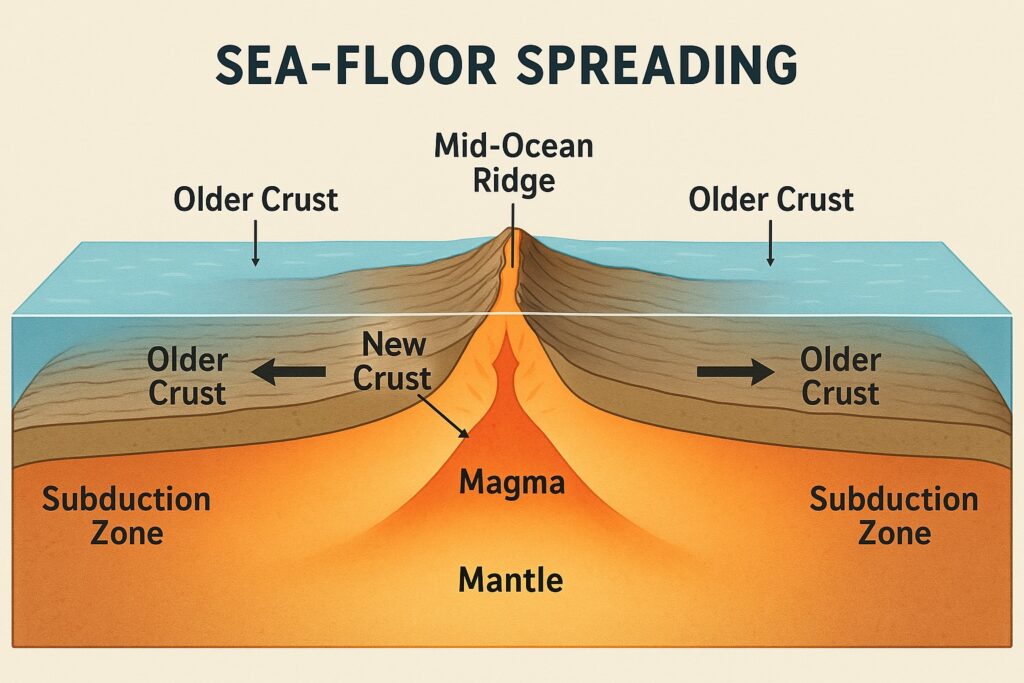
Over time, the movement of the oceanic plates can cause them to collide with or move apart from one another, creating features such as trenches, volcanoes, and island arcs. These movements also cause earthquakes and the formation of new mountains and continents.
The theory of sea floor spreading has been supported by evidences like magnetic anomalies in the oceanic crust that show the history of the Earth’s magnetic field, the age of the oceanic crust, and the distribution of earthquakes and volcanoes. It is now widely accepted as a fundamental concept in the field of plate tectonics.

Seafloor Spreading Theory Evidence
The seafloor spreading theory is supported by a variety of evidence from different fields of science. Some of the key pieces of evidence include:
- Magnetic anomalies: When molten rock solidifies, it preserves the magnetic polarity of the Earth at the time. As new crust is formed at mid-ocean ridges and moves away, it creates a pattern of alternating magnetic stripes on the seafloor. This pattern provides strong evidence for the seafloor spreading theory.
- Age of oceanic crust: The age of the oceanic crust gets progressively older as you move away from mid-ocean ridges. This supports the idea that new crust is continually being formed at these ridges and then moving away.

Proof of Sea Floor Spreading - Earthquakes and volcanoes: The distribution of earthquakes and volcanoes is also consistent with the seafloor spreading theory. Earthquakes occur along plate boundaries where plates are either moving apart or colliding, and volcanoes often occur at subduction zones where one plate is being forced beneath another.

Volcano at the Subduction zone - Paleomagnetism: Rocks on land that were once part of the seafloor can provide evidence for the history of the Earth’s magnetic field. This has been used to show that the Earth’s magnetic field has flipped many times in the past, which is consistent with the seafloor spreading theory.
- Sediment thickness: Sediments accumulate on the seafloor at a predictable rate, and the thickness of these sediments provides a record of the age of the crust. This data supports the idea that new crust is formed at mid-ocean ridges and then moves away over time.
Overall, these lines of evidence provide strong support for the seafloor spreading theory and help us to understand how the Earth’s crust is continually changing over time.
Sea floor spreading plays a crucial role in the theory of plate tectonics, as it explains the movement of the Earth’s lithospheric plates. The process of sea floor spreading is responsible for the creation of new oceanic crust, which is eventually destroyed at subduction zones. This continuous cycle of crustal creation and destruction drives the movement of the Earth’s tectonic plates and shapes the face of the planet.
Conclusion
In conclusion, sea floor spreading is a geological process that occurs at mid-ocean ridges, where new oceanic crust is formed through the upwelling of magma from the Earth’s mantle. This process is an essential component of plate tectonics and is responsible for the movement of the Earth’s lithospheric plates. By understanding the process of sea floor spreading, we can gain insights into the dynamic nature of our planet and the forces that shape it.
